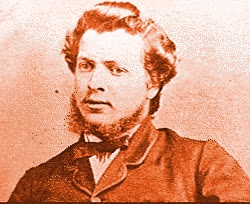I believe the news and stories clearly show the position of the Government in relation to Aboriginal People
I had the good fortune to visit Fort Chipewyan many years ago. It is a very isolated mostly Aboriginal community in northeastern Alberta. If you were to consider a community that has been impacted by its’ environment – there is no greater place.
The community lies along the shore of Lake Athabasca. When I went there it was a terrain that had its’ own beauty but it came with many challenges. To give you a small glimpse of the community the hamlet of Fort Chipewyan has a small population – based on the 2006 census it had 915 people. The population in Fort Chipewyan and the surrounding area is largely made up of Cree First Nations, Chipewyan First Nations and Métis people.
The media yesterday through an Alberta Health report released alarming statistics in relation to the cancer rates of people living in this community. The Alberta report and the government is quick to say there is no proven ability to consider that this may be a result of their environment.
The Governments can look the other way – blame others and try to convince Americans of their clean oil but the people of Fort Chipewyan could tell you a story that started many years ago.
Lake Athabasca has one of the worlds largest fresh water deltas which receives water from the Peace River, Slave River and the Athabasca. The Peace Athabasca delta also has the designation of being the largest boreal delta in the world.
I had the good fortune to visit Fort Chipewyan many years ago. It is a very isolated mostly Aboriginal community in northeastern Alberta. If you were to consider a community that has been impacted by its’ environment – there is no greater place.
The community lies along the shore of Lake Athabasca. When I went there it was a terrain that had its’ own beauty but it came with many challenges. To give you a small glimpse of the community the hamlet of Fort Chipewyan has a small population – based on the 2006 census it had 915 people. The population in Fort Chipewyan and the surrounding area is largely made up of Cree First Nations, Chipewyan First Nations and Métis people.
The media yesterday through an Alberta Health report released alarming statistics in relation to the cancer rates of people living in this community. The Alberta report and the government is quick to say there is no proven ability to consider that this may be a result of their environment.
The Governments can look the other way – blame others and try to convince Americans of their clean oil but the people of Fort Chipewyan could tell you a story that started many years ago.
Lake Athabasca has one of the worlds largest fresh water deltas which receives water from the Peace River, Slave River and the Athabasca. The Peace Athabasca delta also has the designation of being the largest boreal delta in the world.
In 1968 a dam was built on the Peace River called the Bennett Dam. The flooding of the Finlay and Peace river valleys was a tragedy for the aboriginal people and the impacts were felt from the reservoir valleys through to Fort Chipewyan. In fact, late last fall one of the Aboriginal groups called the Kwadacha First Nation received a multi million dollar settlement for the damages that they endured as a result of the dam.
The Bennett Dam also caused the water levels in the Peace Athabasca Delta to significantly drop. BC Hydro has disputed that at different times but there has been different things attempted to try and raise the levels in the past which even include weirs.
The loss of water levels in the Delta has environmental effects on the Fort Chip people but it also has life style impacts. The people of Fort Chipewyan are dependent on the water way as a means of transportation throughout the summer and fall months of the year. It provides the community with a means to barge their supplies into the community and they also use it as a source of access to traditional food sources. When the delta water recedes the barges can not move. The boats can’t depend on it as a mode of transportation - they must rely on sustaining their lives on process foods that are preserved; they must rely on expensive transportation to bring in this less then ideal food source; they must use air travel to access the required medical services that they may need and mostly the issue of the delta is that it is one of the avenues of contaminating Lake Athabasca.
Then we start with the issue of the mining that has contaminated the water sources between Fort McMurray and Fort Chip. The tailing ponds that have been knowingly leaking and sending toxic recipes into the waterways both surface and subsurface. There have been times that notices have been sent out about warnings about the fish and wildlife source being less then healthy and that they should not be eating animals in certain areas.
I am also not indicating that the tar sands and dams are the only detriment to this community because on the north shore of lake Athabasca (Saskatchewan Side) there is the uranium mining and gold mining.
None of this is the entire story … there are the issues that there has been no investment of infrastructure to support the needs of the community in the area of education, health or programming. Often – even though many hear about the plentiful jobs available for the taking and opportunities galore – Fort Chip is to far away to benefit (you mostly must fly in and out of the community or if the waterway is open it is a 6 - 8 hour boat ride to Fort McMurray) but they are not far enough away not to be impacted.
Over the last several years the Aboriginal leaders in Fort Chipewyan have been raising the issue of the number of their family members that seemed to be contracting cancer. The death toll to cancer appeared to be higher based on what they knew and the forms of cancer were rare. In 2002/03 Dr. John O’Connor of Fort Chip began speaking out about the issues related to the patients he was working with. He was later put before a great deal of professional challenges by the Alberta Government for raising the alarm on the issue and the Alberta Government insisted that these allegations were unfounded. The Aboriginal people of Fort Chip were forced to do some of their own studies relating to the water and the fish to try and make the government take the allegations seriously. They found higher levels of various toxins in the fish, water and soil.
In the spring of 2006 - Dr. O'Connor wanted the oil industry to pay for health research that would explain the high rate and rarity of the cancers in the community. In May of 2008 the Alberta Government in partnership with Health Canada agreed to launch what they termed a "Comprehensive Review" that would have the results released in the fall of 2008.
Well here we are in the early part of 2009 and a report is released …. But comprehensive …. I would say not. Comprehensive would have had recommendations that clearly set the parameters of assessing responsibility. It would not have had the Government of Alberta still denying any environmental causes.
As Canadians we can all turn the other way – it is not our children, our elders and our community that is drinking the water – eating the food and suffering the consequences of our industrial greed. We watch governments work with industry to ignore the issues that are raised in relation to the on-going development without hesitation for the long term impacts of what this does. In fact, one of the Alberta Members of the Legislative Assembly said we should be happy that the industry is mining the oil because when he went on a site visit the stuff is just bubbling up and contaminating the water ways.
We must remember that many international and national corporations have been making billions of dollars in profits and as they try to tell you about their Community Responsibility and Relationships they would sooner look the other way and continue to ignore the facts.
The ERCB released new regulations on tailing ponds this week – this will not clean up the underground water and soil contamination that has gone on for decades.
All of this seems far too little far too late. And now…the saga continues as there is talk about another dam on the Peace River by Dunvegan. Industry keeps progressing and Aboriginal people are overlooked.







No comments:
Post a Comment